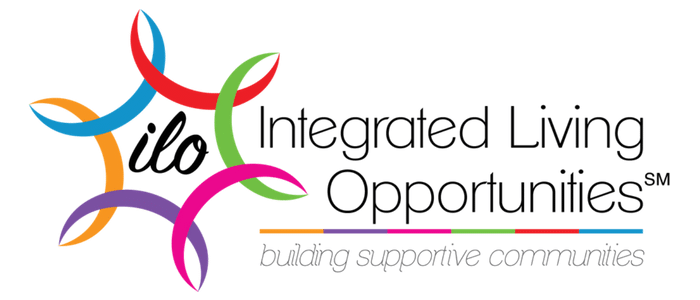Good morning everyone, and welcome back to the blog today! We hope that you have all had a productive week and, as always, we would like to thank you for taking the time to visit our website.
Here at ILO, as you know, we are all about helping individuals with disabilities build and lead full, inclusive, independent lives; lives that are created according to the individuals hopes and dreams. We also recognize that as each individual is different, so too are each individual’s goals for independent living. That’s why we created Integrated Living Opportuanities, and as an organization we are committed to helping participating families and their self-advocates (individuals with disabilities) build inclusive, integrated communities that support independent living. At ILO, we put the self-advocate and his or her participating family first – we want to support all self-advocates in their quest for independent living, not box individuals in with pre-determined choices.
As a part of that committment to self-direction, we would like to take today’s blog and devote it to yet another unique independent living option that has recently come to our attention: life sharing. If this is a topic you are interested in learning more about, please join us!
Life Sharing: What is it?
“Life sharing” as an independent living option for individuals with disabilities is exactly as its title suggests: a living option in which the individual with disabilities essentially shares every aspect of the provider’s life. That includes home, social, and recreational life; it also includes the sharer and the provider developing a close relationship of mutual care and respect. According to Developmental Programs, a Catholic Social Services program operating out of PA, life sharing is a cost-effective alternative to more traditional residential services. An individual with a developmental disability joins a provider family, in their private and already established home, as a fully participating member of that family and community. Life Sharing is more than providing the basics such as food and shelter. It is about sharing life experiences, and building mutual relationships and responsibility.
How Does it Work?
As with any independent living option, there are a number of different organizations that coordinate life sharing arrangements all across the country. In order to get a good idea of how this living arrangement works, let’s take a look at KenCrest, a life sharing organization that opened its first life sharing home in Montgomery County in 1985.
As written on the organization’s website, as a part of KenCrest Life sharing, an individual can live with and share [their] life with a supportive person or family. Life sharing relationship involves a close personal relationship and a place to live. The best living arrangement may mean living with a family or a roommate, or it may mean someone moving into [the individual’s] own home.
The staff at KenCrest is committed to ensuring that the arrangement between provider and sharer is mutually agreeable; as stated in on their life sharing page. KenCrest staff take the time to get to know you well and to understand your desires for your new arrangement. Then you will have the opportunity to visit and spend time with potential Life sharing families before making a decision.
It should be noted that as each organization is different, different approaches to facilitating life sharing agreements. Ken Crest, as a specific example, not only arranges and supports life sharing before the agreement is entered into, it also provides following help, support, counselling, and respite services for the life of the agreement; this long term involvement also includes what we feel is incredibly important – 24/7 management and on call emergency support.
If you are curious about how exactly a life sharing arrangement can be entered into, please visit KenQuest’s information page; their comprehensive and detailed FAQ walks readers through the process step by step. As mentioned, each organization facilitates the life sharing arrangement differently. On the whole, however, (based on our research) each organization appears to be committed to helping an individual with a disability find a family/provider that is welcoming, and willing to integrate the individual with disability into every aspect of life – a chosen family, if you will.
Life Sharing Resources/Facilitators
If you are interested in life sharing, and would like to investigate this independent living option as a viable choice for your family member with disability, please check out these resources/facilitators that we have gathered below:
BACI– An organization operating out of Burnaby, Canada, BACI none the less offers a wealth of information on their website about the life sharing concept, including a life sharing handbook.
Innisfree Village – Life sharing at Innisfree means that residents and their volunteer caregivers live as families in the community’s 15 houses. In this close-knit environment, people develop profound relationships based on mutual needs, respect, and love. Check out Innisfree’s website to learn more about life sharing.
Disability Scoop – Although not technically a resource, Disability Scoop recently featured an article on this new independent living option; we encourage you to read this article and all articles on this excellent website.
Achieva – Another life sharing provider, Achieva facilitates Life sharing as one of their residential services. Achieva operates out of Pennsylvania.
Would you like to learn more?
Again, thanks for taking the time to visit our website today! We hope that you learned something new and interesting, and are able to add another viable independent living option to your list of possibilities for your family member with special needs.
As always, if you would like advice, whether it be financial planning, life planning, or would like to learn more about ILO’s intentional communities, please don’t hesitate to contact us! We would love to meet you and learn all about your incredible family.
